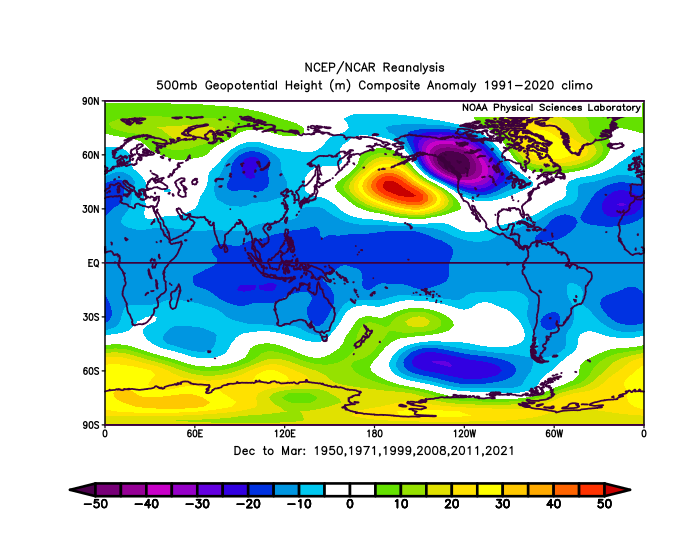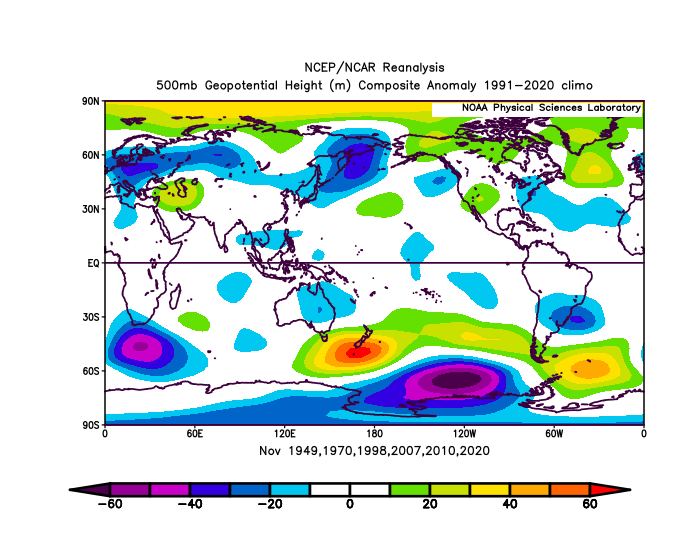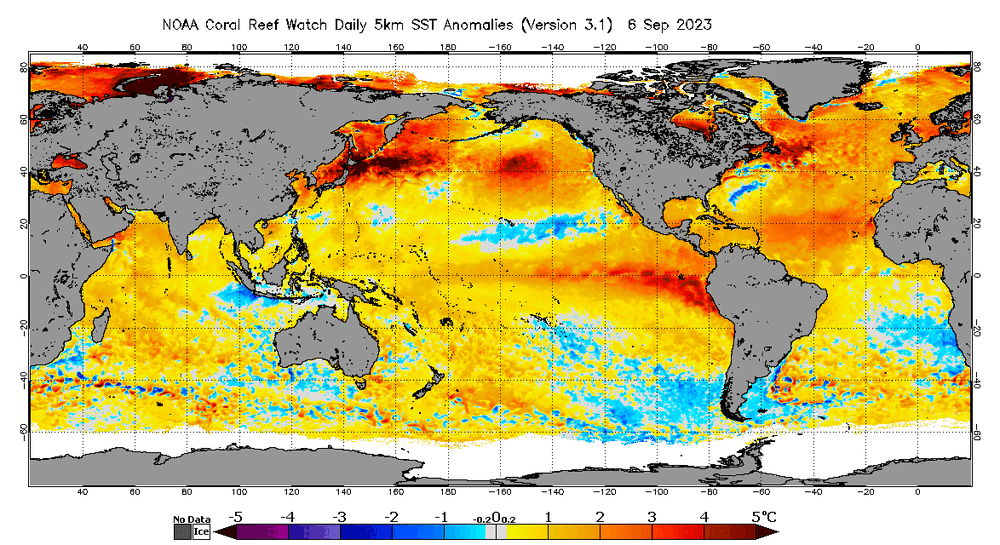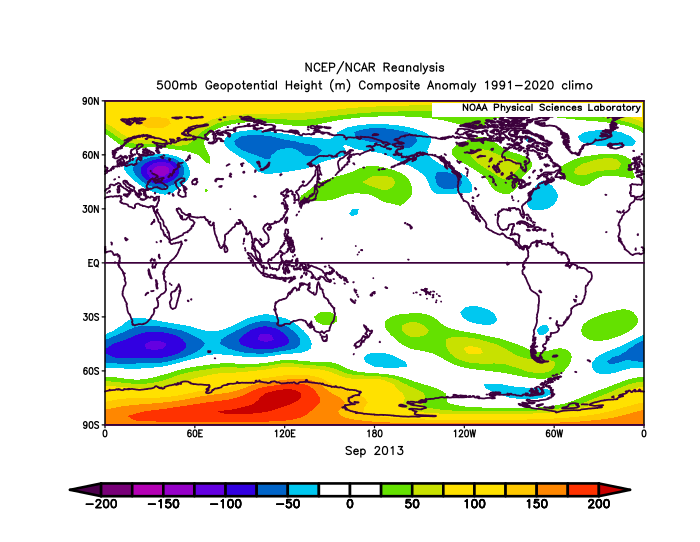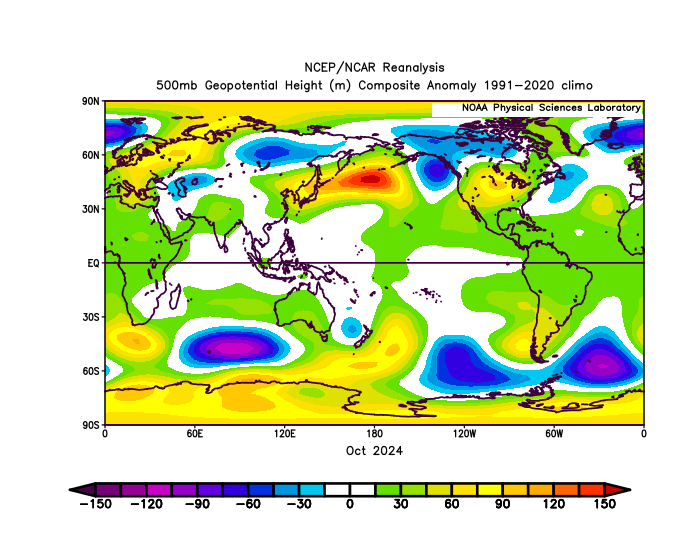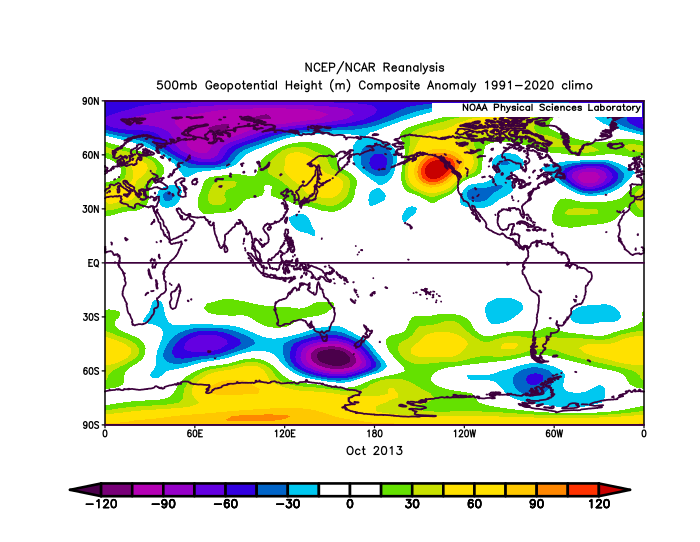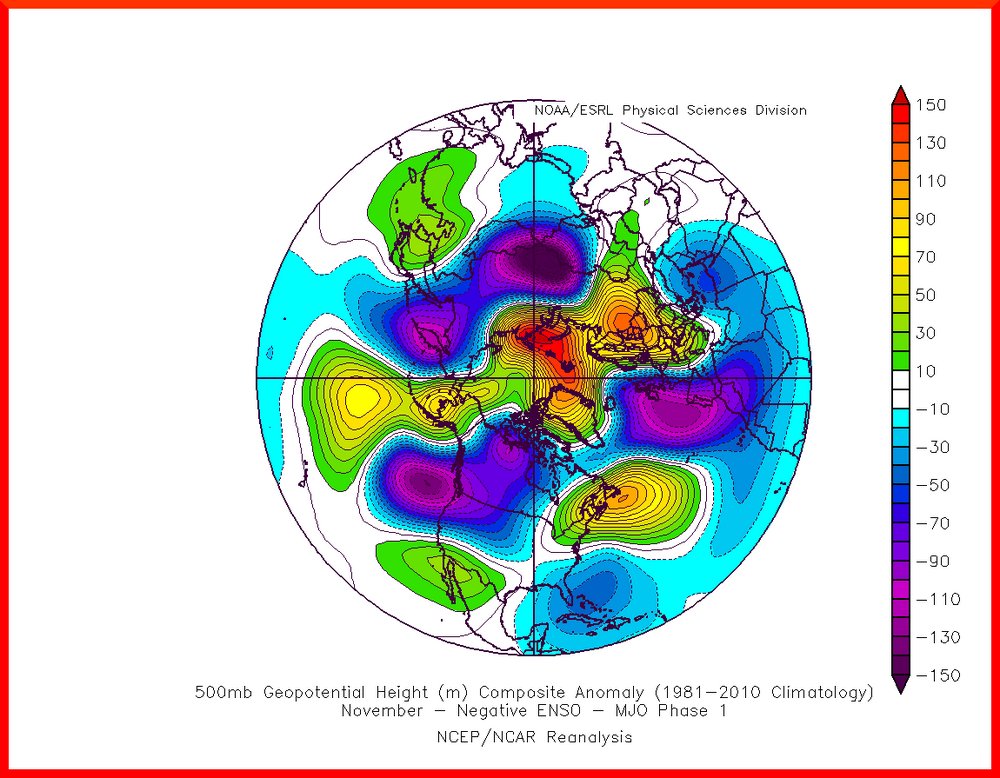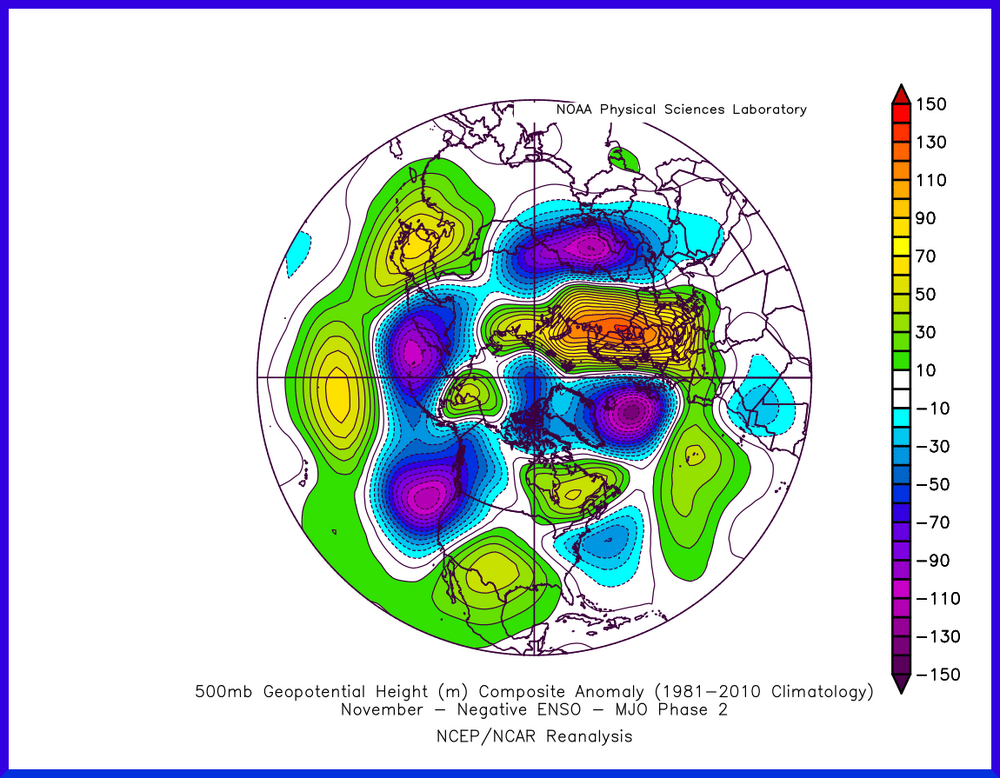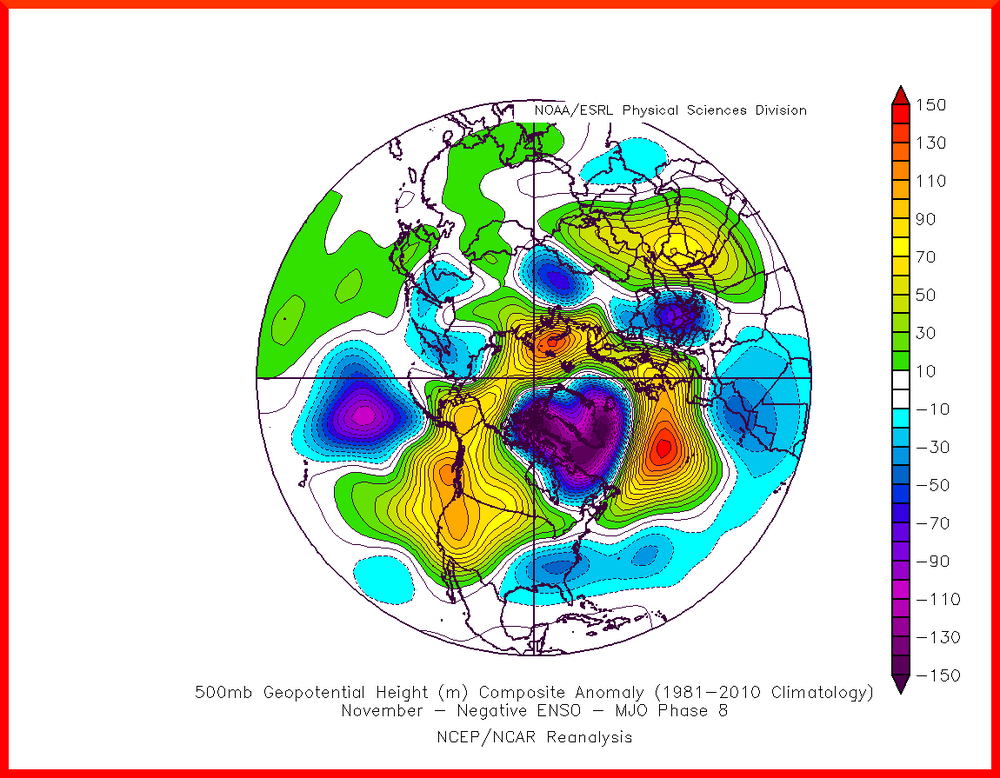
so_whats_happening
Meteorologist-
Posts
1,453 -
Joined
-
Last visited
Content Type
Profiles
Blogs
Forums
American Weather
Media Demo
Store
Gallery
Everything posted by so_whats_happening
-
2024-2025 La Nina
so_whats_happening replied to George001's topic in Weather Forecasting and Discussion
How it gets there not exact but surprisingly GEFS, ECMWF, and JMA all in rather good agreement. I do hope we don't have a high amplitude 7 and then quick to the COD becoming a weak 3/4 and repeating like we have had in recent years, that just leads to cold unleashing through the central plains. With the minor Westerly anomaly showing up into the new year this will start to look like a modoki La Nina with another warming of eastern 3 and 1+2 so it may throw us a bone if we can hold amplitude into 8/1 with that type of setup. My fingers are crossed! Of note the MJO has been crawling almost 2 weeks in phase 5 pretty solid phase 5 look in the northern hemisphere. As Bluewave has mentioned the jet extension is a bit more than we typically would see under this pattern thus you can see the shift of reality to what would typically occur. -
2024-2025 La Nina
so_whats_happening replied to George001's topic in Weather Forecasting and Discussion
This is a minor warming so I wouldn't expect major shifts in SPV location/strength or resulting 500mb/surface temp pattern to something seen in my post. If I had to say what may be influencing our pattern a bit right now it would have to be a blend of 3.4 trying to look Nina like and the WP pattern finally looking negative, for now. The PDO seems to be rather muted for now even with negative departures still around so as to not be the main driver. As Bluewave has mentioned there really are some competing factors taking place but things are not staying locked so while overall it may seem like the PDO is muted during these times when it relaxes we bounce right back to the -PDO stance. It may be a wildly variable season with no real clear direction that wants to stick out like a soar thumb. -
2024-2025 La Nina
so_whats_happening replied to George001's topic in Weather Forecasting and Discussion
To me it just looks like a typical wave 1 response with little to no action on the european side to try the squeeze play. So your typical wave 1 response would be to have a warm Canada, we would typically also see a colder eastern Europe but with waters well above average in the Barents sea they tend to moderate just too much and it looks rather mild. We saw something similarish last year. This is not to say it follow in the same path but if I had to take a guess. Here is a nice write-up for one that occurred in 2016/17 season. https://agupubs.onlinelibrary.wiley.com/doi/full/10.1029/2021GL097024 -
2024-2025 La Nina
so_whats_happening replied to George001's topic in Weather Forecasting and Discussion
Last about month and a half the subsurface Nina state seems to be making a little comeback, the overall look is a lot more of a Nina look than it has been for awhile. It will be interesting to see if we do indeed get the weakening of trades showing up on models toward the first week of January. -
2024-2025 La Nina
so_whats_happening replied to George001's topic in Weather Forecasting and Discussion
Warmings occur all the time it is the wave activity that is the important factor that coincides with the warming event. So far there seems to have been quite a lack of negative tilted troughs which send poleward flux which would help slow flow, weakening the SPV. Until we start to see that at the 240hr mark showing up consistently it is just a tale. As of now there looks to be a minor displacement event that takes place but nothing showing up right now through December maybe we start to see signs as we get toward the end of the month into January? It would be nice to see the Atlantic side of things help out a bit but im not seeing it with a fairly large ridging pattern trying to set up along western Europe which leads to minor poleward flux just a bit too far south for my liking. vT__lat_p_30N-80N_zm.pdf -
2024-2025 La Nina
so_whats_happening replied to George001's topic in Weather Forecasting and Discussion
The last 3 months of 500mb patterns shows we finally have changed up the persistent ridging just east of Japan, for now at least. It has not yet setup the continual western ridge like we saw in 13/14 but everything else was still pretty spot on. Again it is not to say that there will be redux of exactly what happened in 13/14 but it is interesting to note the similarities that have shown up over the past couple of months. -
2024-2025 La Nina
so_whats_happening replied to George001's topic in Weather Forecasting and Discussion
It is nice to see cooling finally starting to spread through the Equatorial Pacific, especially past the dateline which has struggled for the past few years to do. This should inhibit strong convection in the 6/7 region as the wave passes through so less overall impact from these phases going forward. The MJO is just crawling at this point so the initial thoughts of 5/6 by mid December seemed right but not sure we make it into 7 or 8 until January now. This is by far the strongest the Nina has looked this year and maybe just maybe there is a chance of hitting a trimonthly of -.5, monthly seems like the better option. The subsurface is a struggling and this last little push we are seeing could be the end of whatever Nina state we currently have. No rapid changes are expected but we look pretty close to 'peak' and should slowly neutralize out again. The warming of waters in the Bering Sea, Sea of Okhotsk, and starting to show in the Gulf of Alaska are good things to help us down the road. While it does look like we did make a dent in the PDO numbers we are still running on the high side of things which is unfortunate, but it is nice to see the loop currents off of Japan instead of it being one solid orange/red/brown area. -
2024-2025 La Nina
so_whats_happening replied to George001's topic in Weather Forecasting and Discussion
What I have found kind of crazy about this pattern is there is no retrograding features at all showing up. The overall trough/ridge pattern seem rather stuck even with a rotating MJO wave to try help kick things along. Even with this semi standing wave look, flow is still rather fast and we would need the buckled flow to buckle even more to really slow things down. We do not have negatively tilted troughs showing up creating poleward flux onto the SPV so that will continue to strengthen slowly over time. I do feel the atmosphere is really trying to change going forward instead of trying to revert back to the same ol' humdrum. The fingerprint of the -PDO and background Nina-like state is still holding strong for now. The waters off of the NW coast of Australia are extremely warm right now. This may be something that needs to be watched as those waters are now some of if not the warmest in the equatorial ocean right now with the waters around 130E-180 are trying to cool a bit with these winds being stuck. I hope we can start to chip away at that warm pool in time. Outside of these few things nothing big seems to be on the horizon. I expect the PDO to be under -3 for the month of November which is a good thing to see. I am also not sure we get to a -.5 trimonthly, this next month should be very telling as we are pretty close to the typical Nina peak timeframe. -
Gulf Stream to Shut Down this Century
so_whats_happening replied to 40/70 Benchmark's topic in Climate Change
Flow can still happen continuously even with the overall lessening of the northern branch deep water formation zone. The water essentially just spreads out across the northern most Atlantic and into the Arctic ocean, makes sense sort of why we are seeing the issues with sea ice on the Atlantic front. Eventually the shock will come to the system with the slowing down down by Florida the estimated time of one loop is about 1000 years so if you have multiple shock locations working in tandem maybe it halves or quarters the time? (big question if that would be the cases) The biggest issue would be at the deep water formation zones basically how long does it take to push the issue through the system. If we start to see Florida current slow down with respect to what we have seen thus far through measurements we can only assume this causes issues further downstream even more than we currently see. If I remember correctly one theory is the Gulf stream sort of takes on a more southerly look (gyre situation) versus branching into two paths west of the Azores. -
2024-2025 La Nina
so_whats_happening replied to George001's topic in Weather Forecasting and Discussion
Agreed there seems to be a strong signal showing up around that time. Still over a week out so we will have to wait a few more days for better details. Luckily it seems like the energy off the West/ Pac NW is the culprit so maybe we can get a reconnaissance in there to help clear things up over the weekend before it impacts much of the country during Thanksgiving week. -
Gulf Stream to Shut Down this Century
so_whats_happening replied to 40/70 Benchmark's topic in Climate Change
It is interesting to see the Florida Current is still as active as it has been with little if no slow down. Could it be simply this current just does not necessarily shut down (or takes a much longer time to occur than previously thought) versus Gulf Stream or region the North Atlantic drift region? I don't have nearly enough access to things as I did in school but has overall vertical properties changed drastically around Iceland? In my time of doing oceanography salinity, density, and temperature played a major role in how quickly currents moved in both the horizontal and the vertical, im sure none of that has changed. Are we seeing changes such as larger freshwater layers not necessarily at the surface but meters down impeding vertical transport or surface temperatures being just too warm to allow vertical transport to increase thus causing a pile up in a way of these warmer waters? This would ultimately create a positive feedback loop of warming and further slowing down if this were the case. It is crazy to see little to no trace at least over the last 5 or so years of the Labrador current or hell even the Canary current. This is one of those chicken and egg situations i feel, was it the atmospheric pattern that helped create and enhance the NW Atlantic warming or was it a by-product of an already warming portion of the ocean (due to maybe a slowing northern process) that has shifted the jet configuration and has allowed to further enhance? Have we seen vertical transport changes in the Southern Atlantic similar to what is occurring in the North Atlantic? I feel these two locations would be much more in sync with each other than the currents further south into the subtropics. I know we probably do have quite some time and much warmer temps to experience before what is a collapse of the AMOC but these are just some of things I think about from time to time. Maybe one day in the next decade we flip the AMO and these things can be put to bed for a little... -
2024-2025 La Nina
so_whats_happening replied to George001's topic in Weather Forecasting and Discussion
https://www.meteonetwork.it/models/mjo/ -
2024-2025 La Nina
so_whats_happening replied to George001's topic in Weather Forecasting and Discussion
-
2024-2025 La Nina
so_whats_happening replied to George001's topic in Weather Forecasting and Discussion
The only thing I do worry about and it certainly has been something brought up several times by Bluewave is the linking of the -NAO domain with the SE Ridge pattern. It never is a guarantee but has shown that it does/ has happen quite a bit of recent. With a further south -NAO it could in fact hurt us rather than be beneficial, speculative of course at this time since we have yet to see a pattern really sustain whether warm or cold. What we have had thus far is a lot of swinging back and forth of temps. -
2024-2025 La Nina
so_whats_happening replied to George001's topic in Weather Forecasting and Discussion
I will also add the November from those years... really not that far off. The biggest discrepancy thus far would be the pattern into the eastern US, although we are on our way to more troughing trying to take over for the second half so we might be able to smooth it out a bit. Just know nothing will ever fit perfectly. -
2024-2025 La Nina
so_whats_happening replied to George001's topic in Weather Forecasting and Discussion
A bit too far south for my liking but we shall see what happens. If anything that cooling we are seeing is only reenforcing an already strong +AMO. I still am liking this as the forecast for this winter so far it does not seem to be steering me wrong. -
2024-2025 La Nina
so_whats_happening replied to George001's topic in Weather Forecasting and Discussion
Here was last years SST anoms from Sept to Dec. You will notice the 'cooling down' of SST anomalies but overall the pattern stuck. This year thus far we have seen a back and forth of the 500mb pattern maybe signaling the end of this insanely negative PDO pattern but it will still take time to evolve and change up the Pacific SST pattern. My hope was that as we moved toward winter we would start to weaken the -PDO value but not fully flip everything this year. This may be occurring but until we start to see reductions in values we will continue to wait. I will say it is nice to see these 'mismatches' occur but the theme should still be for things to be sent right back to where we started given relaxation in forcings. -
2024-2025 La Nina
so_whats_happening replied to George001's topic in Weather Forecasting and Discussion
Myself and others have noticed things seem to be off by about a month right now. Not to say this continues going forward but I can't help but think that maybe just maybe this still has a really solid possibility this winter. If we actually really start to reduce the -PDO within the next 2 weeks or so it only helps the idea. If we really start to amplify this -EPO pattern it could be interesting going forward. -
2024-2025 La Nina
so_whats_happening replied to George001's topic in Weather Forecasting and Discussion
Impressive changes going on across the warm pool. I expect a monthly down to -2 to -2.5 area for November and if activity continues then maybe just maybe above -2 for the first time in awhile. https://psl.noaa.gov/map/clim/sst.anom.anim.week.html -
2024-2025 La Nina
so_whats_happening replied to George001's topic in Weather Forecasting and Discussion
The QBO is changing at the upper levels like it usually does whether going westerly or easterly. The important factor still is the 30-50mb range regardless which shouldn't change for another ~12 months. They are correct though in stating the QBO is in the east descending phase as of right now. Westerly tends to descend faster than easterly so it shouldn't make a difference at all for winter, but it should give us clues going into next winter. -
Arctic Sea Ice Extent, Area, and Volume
so_whats_happening replied to ORH_wxman's topic in Climate Change
Third lowest sea ice volume for September 1979- Present only slight less than 2019 and slightly more than 2020 and well just not even close, yet, to 2012. https://psc.apl.uw.edu/wordpress/wp-content/uploads/schweiger/ice_volume/PIOMAS.2sst.monthly.Current.v2.1.txt -
2024-2025 La Nina
so_whats_happening replied to George001's topic in Weather Forecasting and Discussion
Phase 1 and Phase 2 look interesting coming up lets see if it happens. This type of pattern will start to put pressure on the Polar Vortex. Probably not enough to weaken it significantly just yet but enough to halt the strengthening and disturb it a bit. If we keep seeing these higher heights around the eastern European/ Kara Sea region flare up this may be the random shake-up that needs to occur to bring us out of the constant ridging barrage we have in place. Should be fun to see as we head toward winter. What would really seal the deal on a weakening PV and allow for some winter fun would be this around Kara sea and an Alaskan ridge... Not in sight right now but something maybe to watch as we go forward. If we go on with progression of the MJO we hit 4/5 again toward the end of the month and start to maybe (hypothetically at this point, since we would be so far away) swing into phase 7/8 as we close in on mid December, not great but not terrible. with maybe a chance at something stretching into early January. Just really depends on how fast the wave wants to move and the strength. Overall though looking rough to say the least. All Im looking for is some type of precip coming from the sky. Going on almost a month and a half with about a trace. Water restrictions hoisted around my area. -
2024-2025 La Nina
so_whats_happening replied to George001's topic in Weather Forecasting and Discussion
Solid rise and fall would mean many moving parts. I do think the trough will come, not being denied in that aspect but I would expect the forcing from phase 8 to come into November. Now I do not necessarily agree this will be the look for November though maybe after the trough swings through? (hence the red border, some of the lowest probabilities you will find) I do find it weird though that we would have one phase show up more than another meaning we don't even see Phase 7 pop in for October if we are getting an instant reaction but we do see Phase 8.

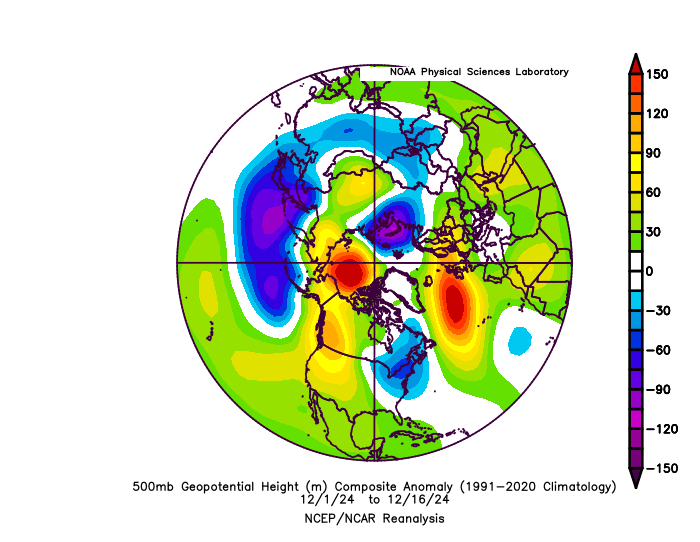
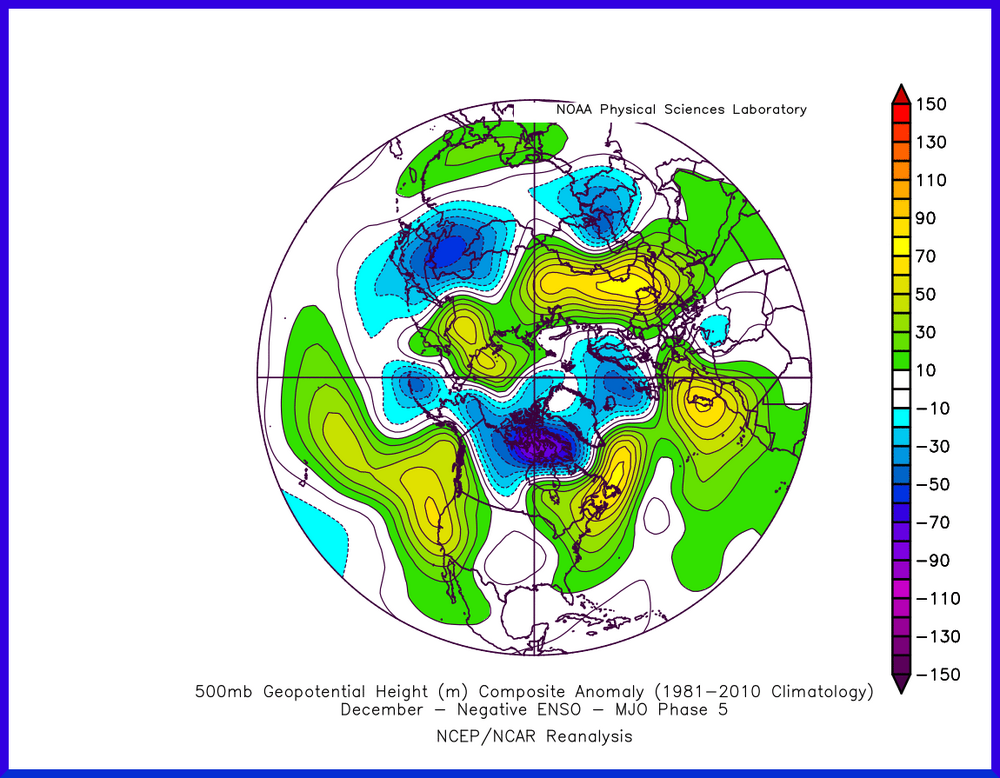
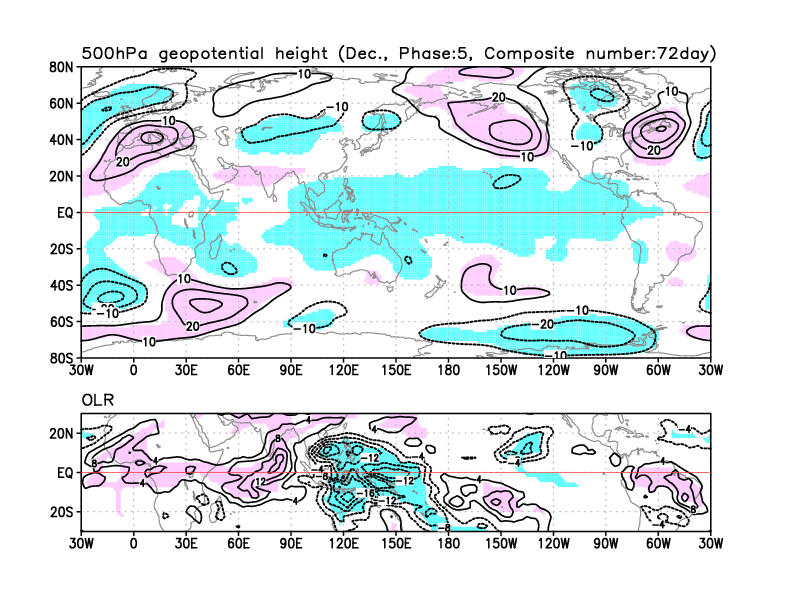


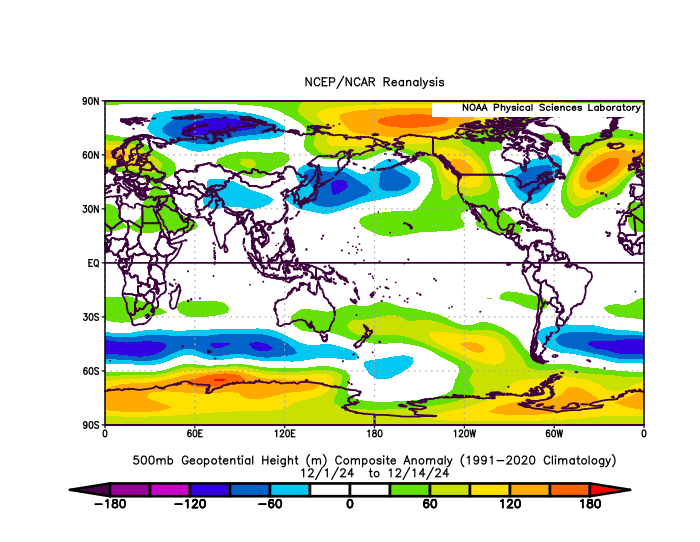
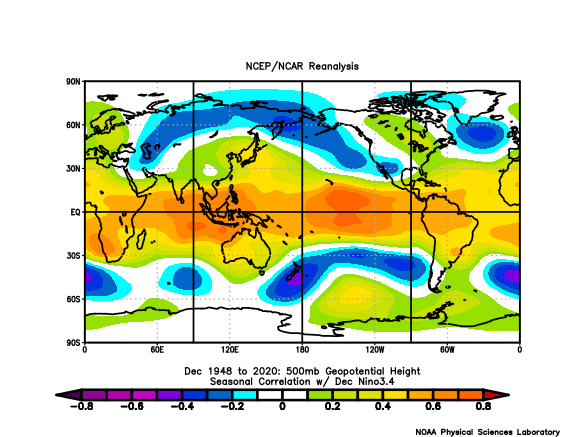
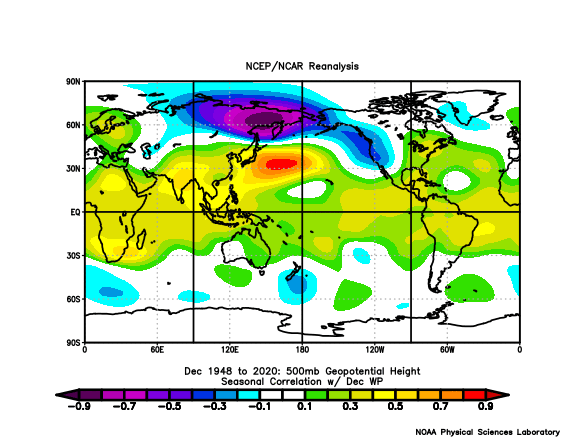

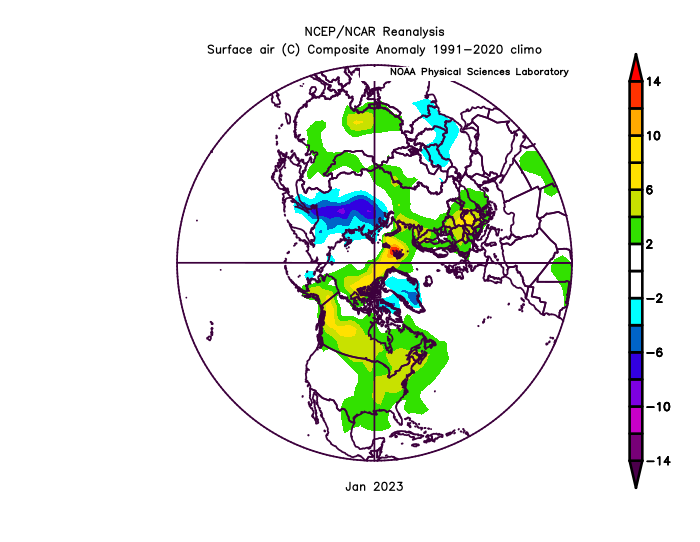
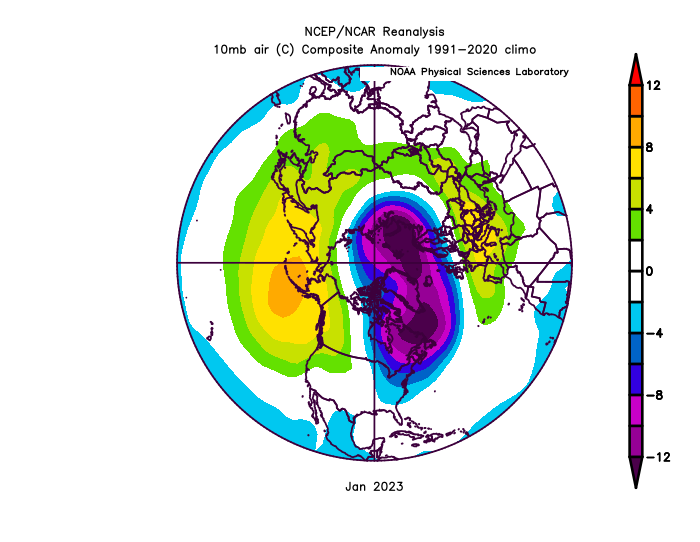
.thumb.gif.6f76cf28b6aa9611061aad54f1dd16ef.gif)
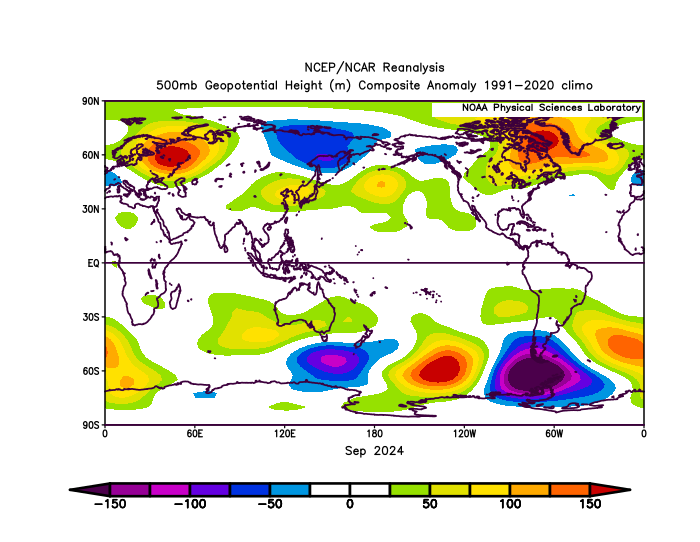
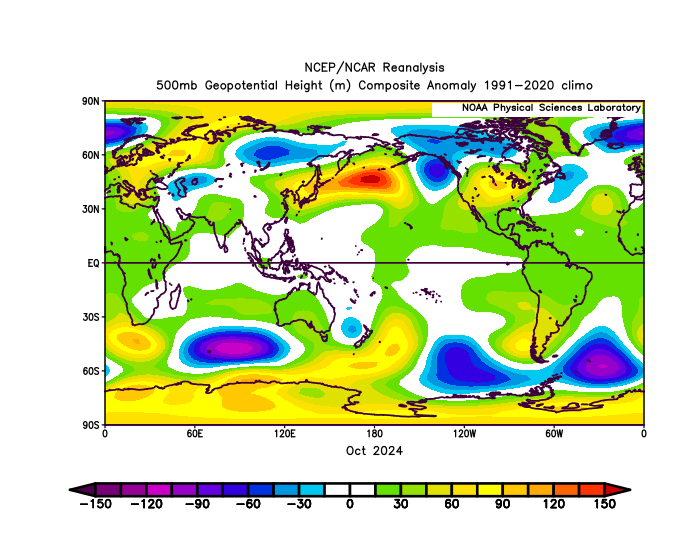
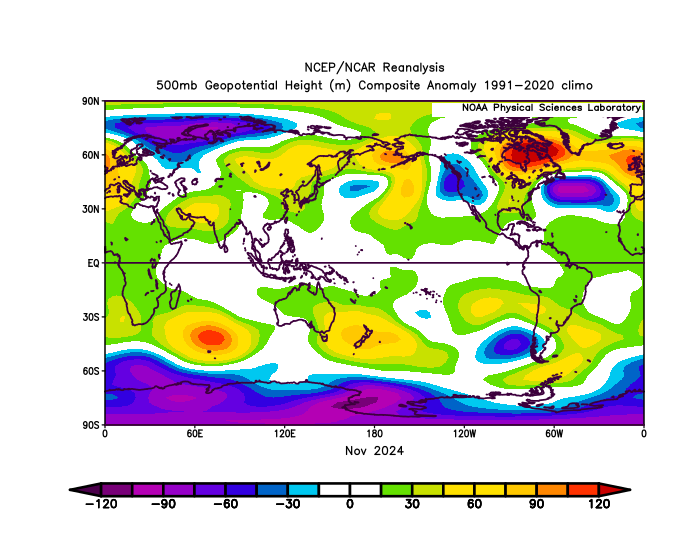
.thumb.gif.32165ed7418e91c6e5c3f6772cc3dc0b.gif)
